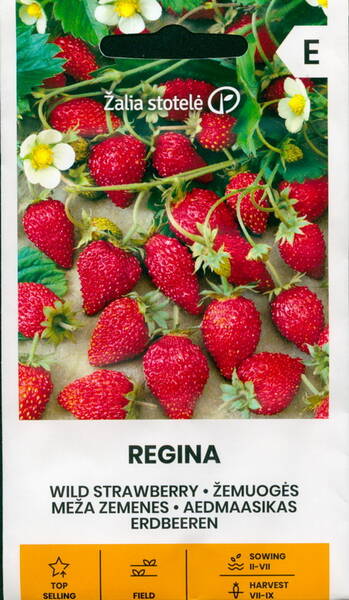Differs in high productivity and continuous fructification during the whole season. The plants have a compact bush and give large berries of beautiful shape and bright color, 3 cm in diameter. The berries are tasty, with a very rich aroma of wild strawberries, juicy and dense pulp, they begin to ripen two weeks earlier than other varieties. Differs in high winter hardiness, resistance to a drought and to many diseases and wreckers. Can be grown as a pot culture.
1.0 g = 2800-3200 seeds.
Agrotechnics: the first stage is the preparation of the soil mixture: 3 parts of sand are mixed with 5 parts of humus. The humus should be crumbly. The mixture must be heated in the oven for 3-4 hours, at + 90 + 100 ° С. Sowing is carried out in February-March on the surface of slightly compacted and moistened soil. A mixture of seeds and sand should be carefully placed on the resulting surface. Care must be taken to ensure that the seeds do not fall into the depths. Seedlings may appear within 30 days, therefore, to accelerate seed germination, it is recommended to cover the seed box with polyethylene and put it on the bottom shelf of the refrigerator with a temperature of +5 + 7 ° C for 2-3 days. Then place at +20°C for germination. In phase 1-2 of true leaves, seedlings dive into pots and reduce the temperature to +14+16°C. After the appearance of 6 true leaves in plants, it is possible to plant in the ground, with a distance between rows of 25-30 cm, between plants 15-20 cm.
Care comes down to weeding, loosening, watering, feeding and protection from diseases and pests.
Eng.: Remontant Strawberry. Suom.: Kuukausimansikka. Sven.: Trädgårdssmultron, Månadssmultron.
Useful tips for strawberry lovers:
The secret of strawberry yield is in following some rules that can be developed over the years. Their essence is as follows:
1. Nutrition. In winter, scatter superphosphate over the snow. It will slowly dissolve along with the snow.
2. In the spring, after the snow melts, strawberries should be processed by hand, removing dry foliage. It is also necessary to dig aisles and feed with urea, which will give an increase in green mass, which in turn will lead to the formation of buds.
3. Feed strawberries with any liquid bio-fertilizer when the first flowers appear.
4. You will need to feed with complex fertilizer again after the strawberries have faded and the first ovaries appear on its stems.
5. Do not forget to water the strawberries throughout the entire period of growth, flowering and fruiting.
6. Toward the end of summer, strawberries will need to be peeled, thinned and removed extra whiskers, fed with urea, and dig aisles.












